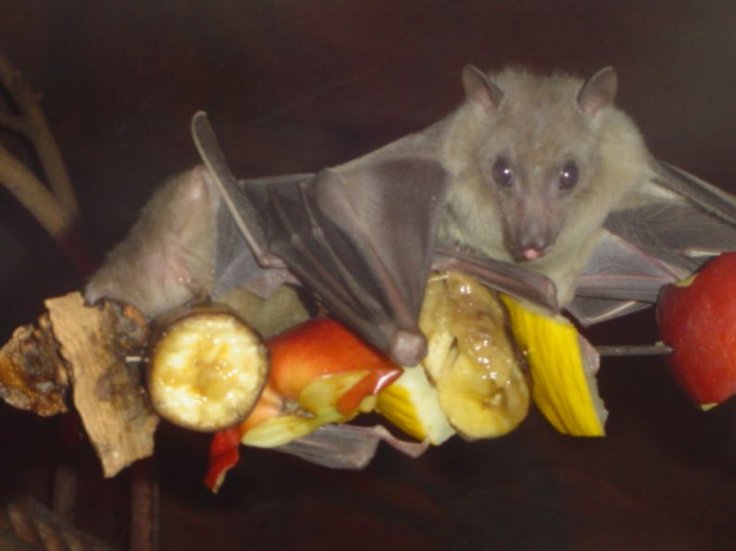Bats, the only mammals capable of true flight, have often been blamed for the outbreak of lethal diseases. Tracing the origins of viruses such as Severe Acute Respiratory Syndrome (SARS) and the Middle East respiratory syndrome (MERS) have shown that the winged rodents cradled the potent pathogens. Speculative attributions are also being made about the new SARS-CoV-2 coronavirus.
An interesting question, however, is this: What makes them the perfect hosts for deadly viruses? A new study by researchers from the University of California, Berkeley, suggests that the immune response in bats is the true culprit. The study says that while bats' immune response to these viruses protects them from infections; it also promotes their rapid replication and evolution, which devastates hosts with weaker immune systems when the virus makes the jump.
"The bottom line is that bats are potentially special when it comes to hosting viruses," said Mike Boots, co-author of the study, in a statement.
A unique immune response

According to the researchers, the immune systems of bats are programmed to launch lightning-fast defensive responses against viruses. This protects the bat from succumbing to the infection, while also letting viruses thrive in its body. A response of this magnitude by the immune system of a human being would trigger an inflammatory response—such as sepsis—with fatal outcomes.
However, this potency is not found in bats, thanks to a molecular mechanism specific to bats. Upon being attacked by a virus, the rodent's immune system leads to the swift production of interferon-alpha, a signalling molecule activated in response to pathogens. When the virus-infected cells secrete interferon proteins, the surrounding cells enter a protective and antiviral state.
"Some bats are able to mount this robust antiviral response, but also balance it with an anti-inflammation response," said Cara Brook, first author of the study.
Understanding the mechanism
In order to understand this accelerated immune response in bats that lead to such adaptability in viruses, the researchers cultured cells from two species of bats—the Egyptian fruit bat (Rousettus aegyptiacus), a natural host of the Marburg virus, and the Australian black flying fox (Pteropus alecto), the disease reservoir of the Hendra virus—to experiment on. They also cultured cells known as 'Vero' cells from the Grivet, also known as African green monkey, as a control.
Viruses no match for the immune response of bats

When exposed to viruses that mimicked Ebola and Marburg, the bat cells repelled the attack of the viruses effectively, owing to the early warning by the interferon mechanism.The immune response in the Australian black flying fox cells was found to be exceedingly powerful when compared to that of the Rousette bat.
While in the case of Rousette bats where a subset of the cells protected themselves, flying fox responses put the brakes on the attacks faster and somehow enabled the infection to last longer without damage to the bat. However, the same immune response was not found in the green monkey cell cultures. The cells were overpowered and killed by the viruses easily. The authors created a simple computer model of the immune systems of the bats to recreate the experiment for further study.
"When you have a higher immune response, you get these cells that are protected from infection, so the virus can actually ramp up its replication rate without causing damage to its host. But when it spills over into something like a human, we don't have those same sorts of antiviral mechanism, and we could experience a lot of pathology," Brooks explained.
What doesn't kill the viruses makes them stronger
The proverb, "What doesn't kill you makes you stronger," applies to the viruses that survive. While the immune response protects the bat, the invading viruses do not die out completely. They rather continue to remain and mutate within the bat's system and exist as long-term persistent infections. Thereby, becoming more virulent and dangerous. Though the bat's immune system can keep up with this viral load, the increasing potency of the pathogen makes it lethal to the new hosts it infects as their immune systems are weaker.

It is not that the human immune system cannot mount such a response in the event of an infection. Simply put, it is not strong enough to effectively counter the destructive ability of the bat-spread virus. "Our immune system would generate widespread inflammation if attempting this same antiviral strategy. But bats appear uniquely suited to avoiding the threat of immunopathology," said Brook.
Jumping to an intermediate host
While the viruses remain in bats without affecting them, they often move on to a final host that they infect via an intermediate host. In the case of SARS, it was the Asian palm civet, Ebola via primates such as gorillas and chimpanzees, MERS through camels, Nipah by pigs, and Marburg via African green monkeys.
A recent study propounds that the intermediary host for SARS-CoV-2 could be the Pangolin. The illegal trafficking of the scaly mammal is prevalent in China. It is through this contact that the deadly virus may have reached human hosts the study suggests. "It is really important to understand the trajectory of an infection in order to be able to predict the emergence and spread and transmission," Brook concluded.









